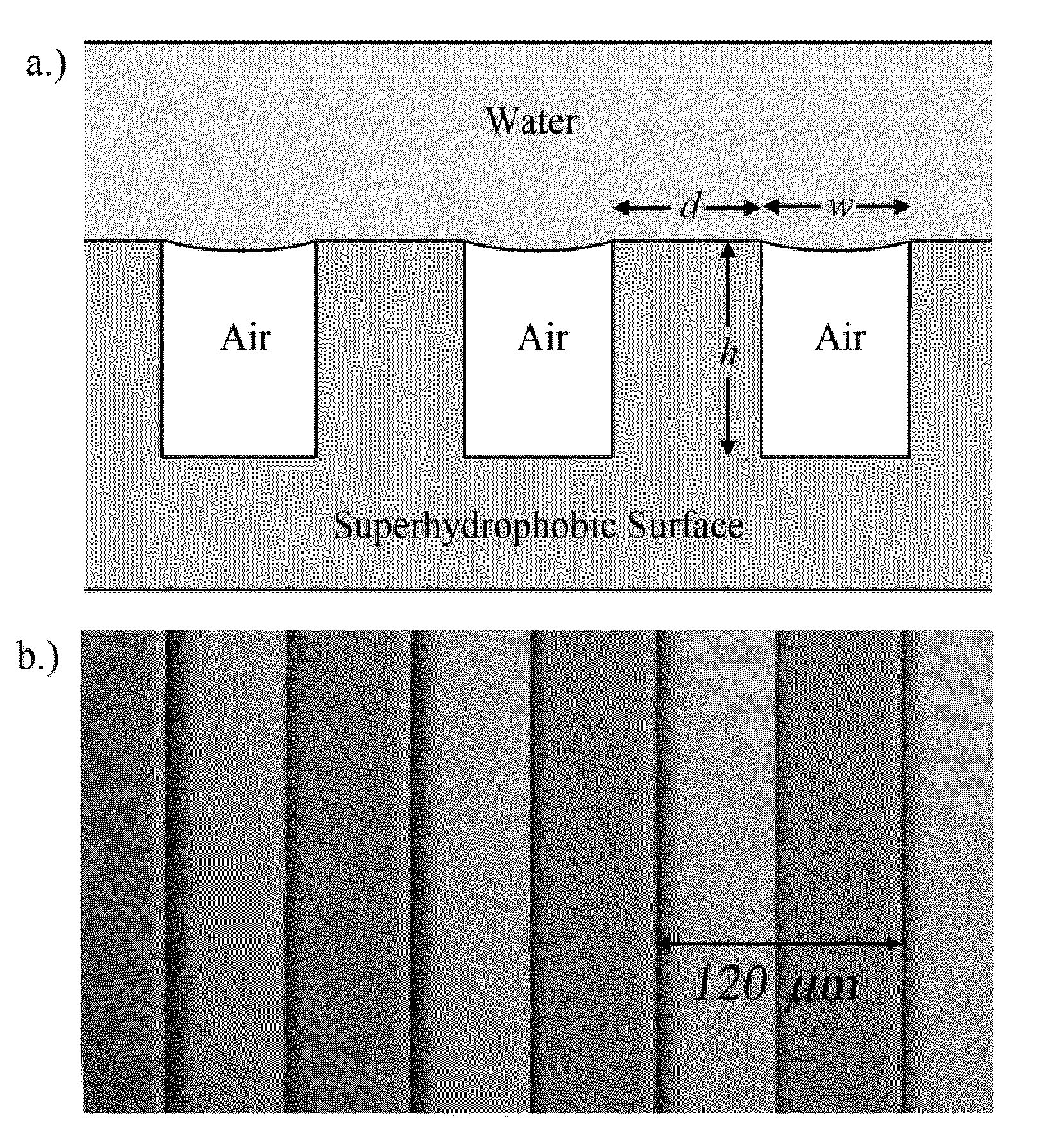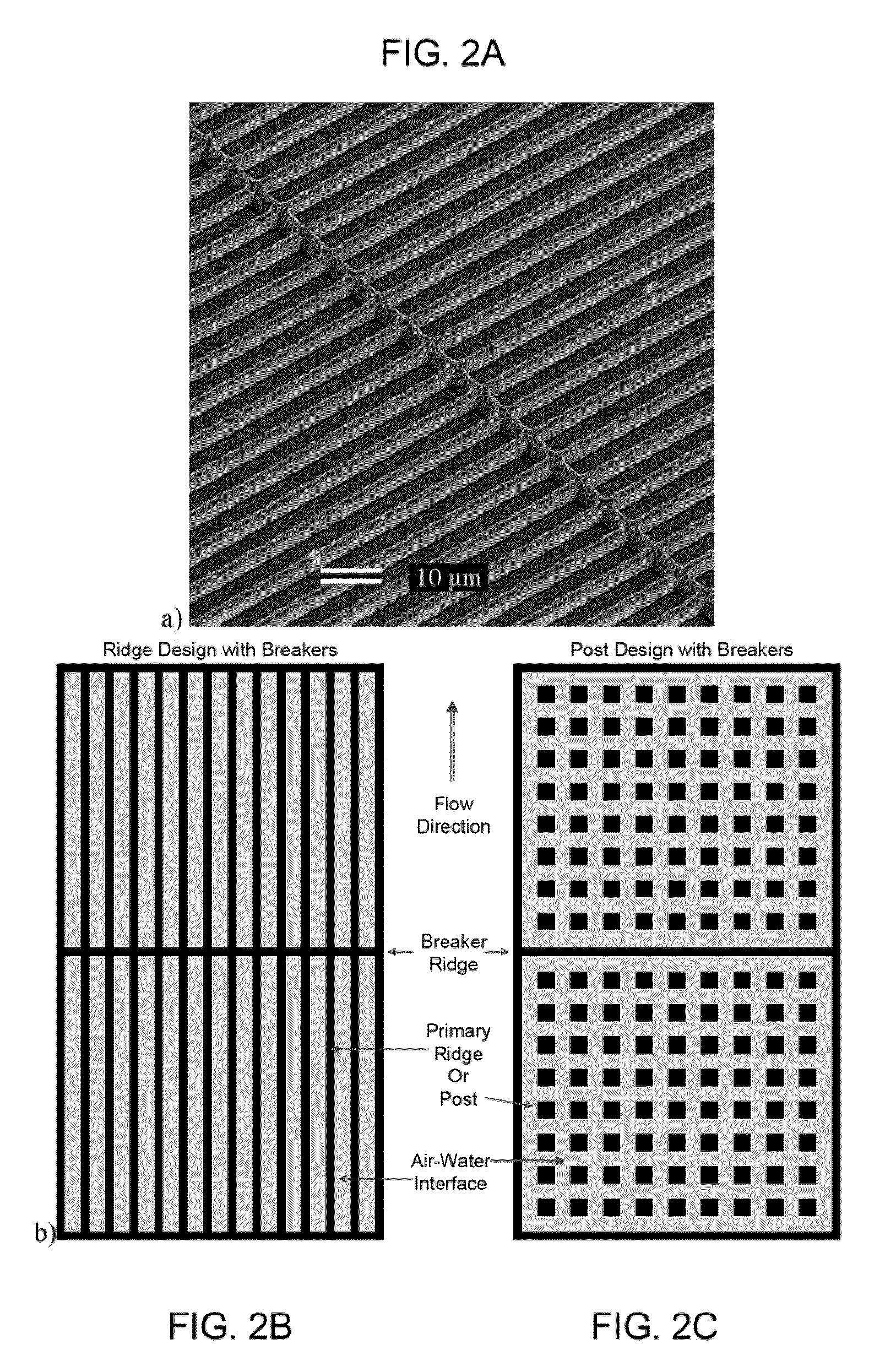Superhydrophobic surfaces for drag reduction
a technology of superhydrophobic surfaces and drag reduction, applied in the direction of electrical equipment, chemistry apparatus and processes, thin material processing, etc., can solve the problem of too expensive implementation, and achieve the effect of reducing the drag for
- Summary
- Abstract
- Description
- Claims
- Application Information
AI Technical Summary
Benefits of technology
Problems solved by technology
Method used
Image
Examples
Embodiment Construction
[0054]We have recently demonstrated that superhydrophobic surfaces can be used as a new passive technique for reducing drag over a wide range of Reynolds numbers from laminar (see Ou, J., Perot, J. B., and Rothstein, J. P., Phys. Fluids, 16 (2004) 4635-4660; Joseph, P., Cottin-Bizonne, C., Benoit, J.-M., Ybert, C., Journet, C., Tabeling, P., and Bocquet, L., Phys. Rev. Lett., 97 (2006) 156104) to turbulent flows (see Martell, M. B., Perot, J. B., and Rothstein, J. P., J. Fluid Mech., 620 (2009) 31-41; Daniello, R., Waterhouse, N. E., and Rothstein, J. P., Submitted to Phys. Fluids, (2009), unpublished).
[0055]We demonstrate that periodic, micropatterned superhydrophobic surfaces, previously noted for their ability to provide laminar flow drag reduction, are capable of reducing drag in the turbulent flow regime. Superhydrophobic surfaces contain micro or nanoscale hydrophobic features which can support a shear-free air-water interface between peaks in the surface topology. Particle im...
PUM
| Property | Measurement | Unit |
|---|---|---|
| Force | aaaaa | aaaaa |
| Pressure | aaaaa | aaaaa |
| Volume | aaaaa | aaaaa |
Abstract
Description
Claims
Application Information
 Login to View More
Login to View More - R&D
- Intellectual Property
- Life Sciences
- Materials
- Tech Scout
- Unparalleled Data Quality
- Higher Quality Content
- 60% Fewer Hallucinations
Browse by: Latest US Patents, China's latest patents, Technical Efficacy Thesaurus, Application Domain, Technology Topic, Popular Technical Reports.
© 2025 PatSnap. All rights reserved.Legal|Privacy policy|Modern Slavery Act Transparency Statement|Sitemap|About US| Contact US: help@patsnap.com



